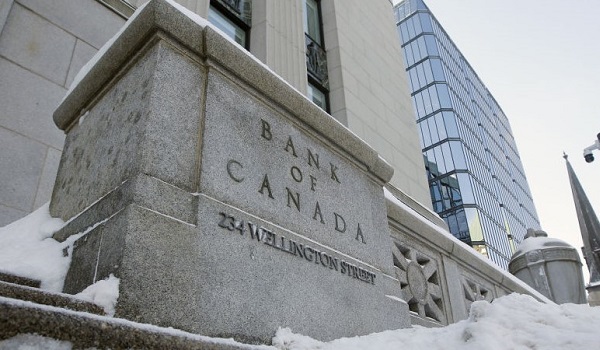The surge in immigrants making the Bank of Canada’s job harder
Record-breaking immigration is muddying the economic picture for the Bank of Canada, distorting key statistics and making its battle against inflation more difficult.
A surge of newcomers – largely driven by an unplanned spike in foreign students and temporary workers – has pushed Canada’s population growth rate to 3.2 per cent, one of the fastest in the world.
The country added more than 1.2 million new residents in a year, an influx that has propped up gross domestic product, bolstered consumer demand and led to higher costs for homes, all while dragging on productivity and boosting the unemployment rate. It’s creating a puzzle for policymakers and economists.
Population gains are complicating the central bank’s ability to assess how restrictive interest rates truly are, according to Stefane Marion, National Bank of Canada’s chief economist. The Bank of Canada raised its overnight rate to five per cent with hikes last June and July after the economy — specifically consumption — showed surprising strength.
“Were the last 50 to 75 basis points warranted when it’s all driven by a population surge which you can’t do anything about?” Marion said in an interview. “I think the Bank of Canada misread the situation.”
While pandemic supply-chain shocks were a forecasting dilemma faced by monetary policymakers around the world, the Bank of Canada is the lone major central bank setting rates amid an accelerating population boom.


It’s inconvenient timing, adding risk to the central bank’s already damaged credibility as policymakers weigh how long they should hold borrowing costs at the highest level in more than two decades.
“No one has models calibrated for this type of population flow,” Marion said.
Last year, the central bank spent “considerable” time during its April rate-decision meetings discussing how population flows are affecting their interpretation of economic data. When the Bank of Canada hiked its benchmark rate in July, Governor Tiff Macklem called the impact of immigration on price pressures “roughly neutral.”
But in a speech last month, Bank of Canada Deputy Governor Toni Gravelle acknowledged that population growth has led to higher costs for housing. Mortgage interest and rents were two major contributors to inflation of 3.4 per cent in December. Excluding shelter, inflation was a full percentage point lower, far closer to the bank’s two per cent target.
Over the long run, immigration will help curb inflation, Gravelle said, adding two per cent to three per cent to the potential growth of the economy.
“It’s made traditionally used economic indicators harder to decode,” Dominique Lapointe, an economist with Manulife Investment Management, said by email. “It adds a unique layer of complexity to monetary policy decision-making.”
The country’s job market is another example. A month of employment gains must now be considered in the context of the expansion of the labour force, which grew three per cent at the end of last year.
In 2019, the economy added an average of 22,000 new jobs a month and the unemployment rate was stable. Last year, it gained about 36,000 jobs a month, yet unemployment rose.
As growth slows in 2024, economists surveyed by Bloomberg say Canada’s unemployment rate is set to rise to 6.7 per cent later this year. That increase of 0.9 percentage points would be the biggest deterioration in labour market conditions among Group of Seven countries, according to forecasts.
A rise in the unemployment rate of that size typically coincides with recessionary periods. But analysts say Canada is likely to add jobs in 2024 — it’s labour-force growth that’ll skew the rate higher.
Marion is one of many economists who say the influx of people is masking underlying economic weakness. After adjusting for population, Canada’s economy hasn’t grown since the second quarter of 2022, shortly after the Bank of Canada began its rate hikes.

GDP per capita — an oft-cited measure of living standards — has receded to 2017 levels.
Additional demand has also put a floor under home prices, protecting the housing assets of millions of Canadians despite higher rates. That’s supporting wealth and adding to evidence that an important monetary channel for the central bank to thwart price pressures has been muted.
“Population growth is distorting everything and it’s really tough to get a sense of the health of the economy at this point,” Randall Bartlett, Desjardins’ senior director of Canadian economics, said by phone. “We still think we’re going to have a mild recession in the first half of the year. But if you look at it in a per-capita sense, we’ve been in recession for a while.”
Relying on more labour instead of capital investments also carries continued risks for Canada’s labour productivity, which has declined for six consecutive quarters and is a persistent source of criticism of Prime Minister Justin Trudeau’s government.
“Part of the issue is that Canadian governments weren’t prepared for the influx of people,” Benjamin Reitzes, a rates and macro strategist with Bank of Montreal, said by email. “There wasn’t sufficient investment in all types and levels of infrastructure, and that’s likely been a drag on broader productivity.”
This article was reported by BNN Blomberg












